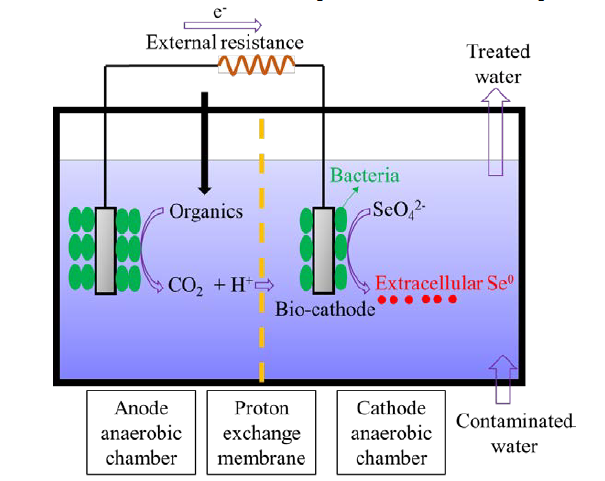A Method of Producing Extracellular Metal or Metalloid Nanoparticles Using a Bioreactor
- US Patent Pending
Metals and metal ions are essential trace elements for humans and animals. However, when presenting in water at high concentrations, they are often toxic and can cause diseases such as hair loss and reproductive failure. Consequently, metal and metal ion contamination represent a potential health hazard. A major cause of contamination in water is the disposal of agricultural drainage. Selenium (Se) is one such element, and can be used to exemplify the hazards of metal and metal ion contamination. The maximum contaminant level set by U.S. Environmental Protection Agency for Se in drinking water is 50 μg Se/L.
Thus, this technology is directed to bio-electrochemical reactors, methods of reducing metal ions in contaminated medium to extracellular metal or metalloid nanoparticles, and methods and devices for separating the extracellular metal or metalloid nanoparticles from the bacteria. For example, the bio-electrochemical reactor is used as a selector to select only bacteria that
produce extracellular metal or metalloid nanoparticles from an electrode inoculum comprising a highly diverse mixed culture. As a result, the bio-electrochemical reactors described serve as an effective means for removing and separating metal ions from contaminated water.


